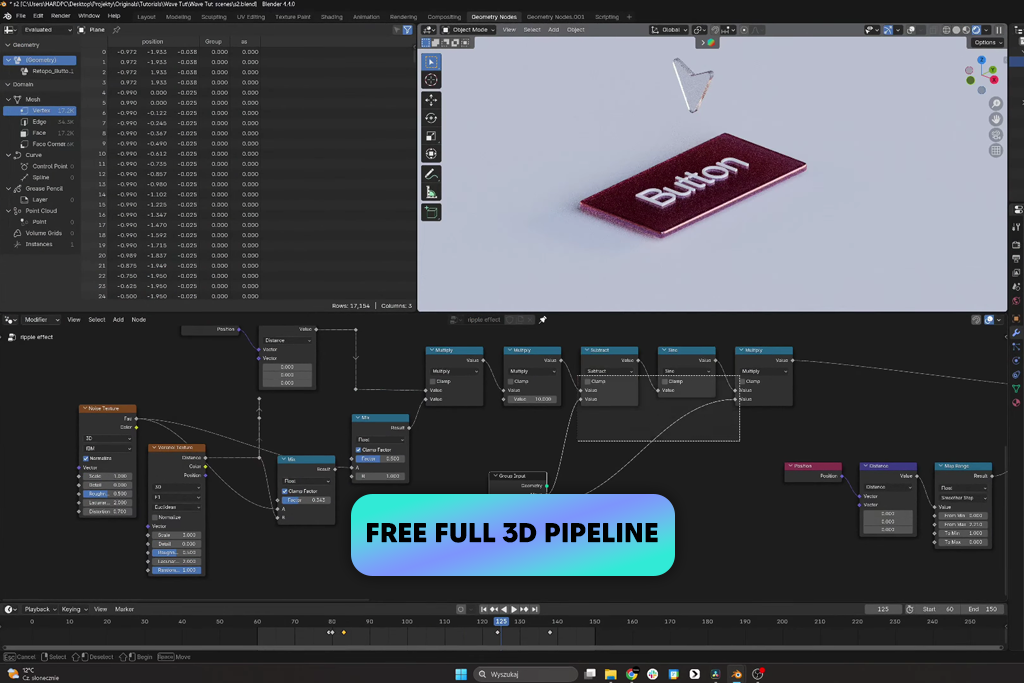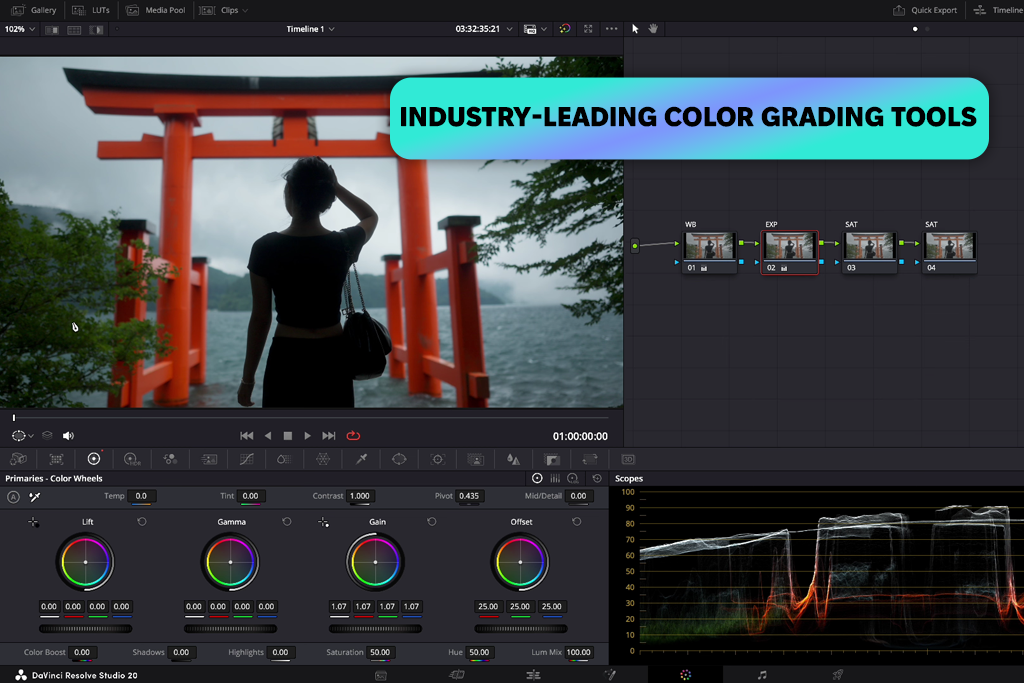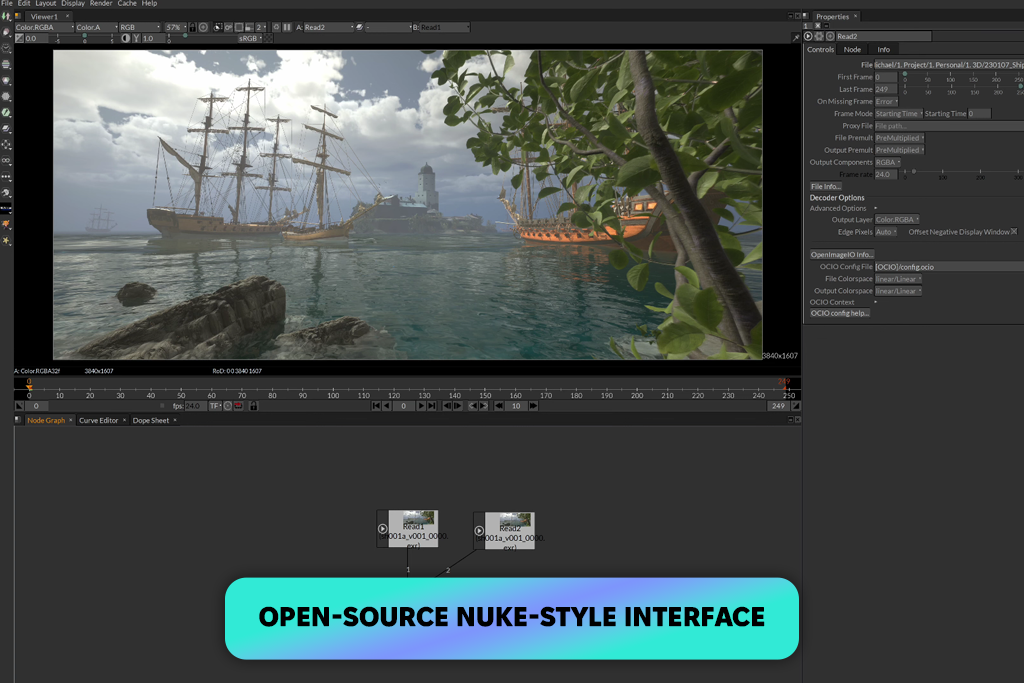When it comes to high-level VFX work like planar tracking and rotoscoping, Mocha Pro has been one of the go-to tools for a long time. Professionals respect it for its precision and advanced features. However, it’s pricey (from $27/month) and can be tough to master. That’s why a lot of creatives I talk to are interested in more practical alternatives. They are looking for tools that are lighter on the wallet, easier to use for everyday tasks, or that fit into their existing workflow.
To find good Mocha Pro alternatives, I set clear priorities. I sought accuracy in motion tracking, dependable masking and rotoscoping, and compatibility with the editing tools most professionals already use. Just as important, I wanted to know if these programs could perform well without scaring off beginners or breaking the budget. Together with my colleagues from the FixThePhoto team, we ran practical tests with different tools to see how they worked in real situations.
The best Mocha Pro alternative isn’t the most powerful or the most expensive tool. You’d better opt for the one that fits your style of work, your budget, and your goals. Over time, I’ve noticed that many creatives rush toward complex, high-end programs, but the truth is, you’ll get better results from software that actually align with your needs and workflow.
For anyone working mostly in animation and motion graphics software, Adobe After Effects is the go-to choice. It offers tools for titles, effects, and even particles. Although it doesn’t match Mocha Pro’s precision in planar tracking, its own tracking tools are usually all you need for regular tasks.
If you create professional VFX projects, Nuke is a leading option, and Fusion works well if you’re looking for a free solution. Since both are node-based, they’re built for detailed visual effects and collaborative workflows. Mocha Pro usually works as a plugin, adding extra tracking power on top of what you already have.
When your projects ivolve 3D modeling and integration, Blender is the top option. It’s free, community-driven, and lets you create, animate, and render entire environments. Mocha Pro doesn’t compete in 3D, but it works well alongside Blender when you want high-quality tracking.
For beginners or anyone who wants straightforward tools, Shotcut, Natron, and Cavalry are solid options. They can’t compete with Mocha Pro in precision, but they will help you learn the ropes and grow your creativity without the steep learning curve of pro-level software.
My recommendation: Instead of chasing the so-called best Mocha Pro alternative, think about your own needs. Are you working on short social clips, commercials, independent films, or big VFX shots? The smartest choice is the tool that supports the kind of projects you actually create.

Adobe After Effects is my favorite program for creative projects. Recently, the software has been updated and became even more powerful. Mocha Pro has much to offer it comes to tracking and rotoscoping, but the latest After Effects version brings animation, compositing, and VFX inside one workspace. When I built a promo packed with moving text and particle effects, it ran smoothly in After Effects without jumping to other tools. Mocha Pro by itself wouldn’t have managed that.
For complicated shots with tricky camera angles, Mocha Pro is still better thanks to its powerful tracking and masking. But in most cases, After Effects offers tools that cope with the task. With this Mocha Pro alternative, you can use a single program for your creative routine. It is fast and helps me meet tight deadlines without juggling extra plugins.
Best for: people looking for a universal program for motion graphics, animation, and compositing without mastering Mocha Pro’s specialized modules.

My coworker Kate kept telling me I had to try Nuke. She claimed it was the best Micha Pro alternative for professional-level compositing. It turned out she was absolutely right. I like how the program uses nodes instead of layers, so handling complicated projects is much easier. Besides, there is an integrated camera tracker.
With Nuke, I was able to finish a commercial project where I needed to drop CGI products into shaky handheld shots faster than I expected. I've always loved Mocha Pro for its incredible planar tracking, but Nuke gives you the whole package, including particles and VR compositing under one roof.
I won't pretend Nuke's planar tracker is perfect. It doesn't handle occlusions or really difficult perspective shifts as smoothly as Mocha does. Whenever I hit those tough spots, I track everything in Mocha Pro and import that data into Nuke. But generally, Nuke offers more than Mocha Pro as a standalone compositing software. For serious, large-scale VFX work where tracking is just one part of everything you need to do, Nuke is simply irreplaceable.
Best for: professional compositing, complex 3D effects, and full-scale VFX pipelines where you may still integrate Mocha Pro for advanced tracking.

Blender is my first choice whenever I'm working on 3D projects. The fact that it's free and open-source is great, but most of all I like the incredible range of tools. I can model objects, create stunning visuals, and even composite everything together. I just finished a product demo project where I animated a 3D object and merged it with real footage. Blender made it all possible from start to finish, whereas Mocha Pro could've only handled the tracking and masking steps.
Blender's tracking tools can't compete with Mocha Pro's planar tracker when it comes to tough footage or intricate rotoscoping tasks. However, Blender is unmatched when it comes to rigging models, creating breathtaking renders with Cycles, an everything in between. Frankly speaking, it's my preferred choice for 3D-centered work. I've discovered that both programs complement each other nicely, but if budget is a concern or you need one comprehensive tool, Blender is a terrific free Mocha Pro alternative.
Best for: people, who work with full 3D pipelines, basic tracking, modeling, rendering, and animation, and aren’t willing to pay hefty sums for Mocha Pro.

DaVinci Resolve has been my trusty companion for years because it handles every post-production task imaginable. You can rely on the program for editing, audio work, color correction, visual effects, you name it. I just created a short film project where I needed intense color grading plus several Fusion-powered VFX sequences. DaVinci Resolve made it easy to move between different stages. This comprehensive approach is something Mocha Pro can't match, since it concentrates exclusively on planar tracking and masking features.
However, I've encountered situations where Fusion's tracking just couldn't handle complicated shots with objects blocking the view. That's when I brought in Mocha Pro's plugin directly within Resolve to deal with such tricky moments. Keep in mind that these tools aren't rivals. They actually work perfectly together, particularly with DaVinci Resolve plugins. For most of my editing, compositing, and color work, I take advantage of Resolve. But when I face challenging rotoscoping or need absolutely reliable planar tracking, I count on Mocha Pro.
Best for: full video post-production workflows, with built-in tracking and compositing that cover most needs, complemented by Mocha Pro for extra precision.

If you're looking for a free option similar to Nuke but more user-friendly, you should definitely try Blackmagic Fusion. When I first launched the program, I didn't expect it to be this powerful. I created the entire title sequence with 3D text, particle effects, and dynamic camera work, without installing a single extra plugin. Sure, Mocha Pro still beats it for planar tracking, but Fusion had everything I needed to complete my project from beginning to end in one place.
Keep in mind that Fusion's tracking tools work fine for basic stuff, but when you're dealing with warped surfaces or blocked objects, they just don't match up to Mocha Pro. For such tricky shots, I'll still bring in my Mocha Pro tracking data every time. Generally, this Mocha Pro alternative is suitable for VFX work, motion graphics, 3D compositing. All in all, many users say this free program is an incredible option if you're ready to move past simple layer-based programs.
Best for: users looking for free VFX software that support node-based compositing and motion graphics, with Mocha Pro integration for advanced planar tracking.

I liked Natron the moment I discovered it. It's basically a free, no-frills Mocha Pro alternative. I decided to test it out on a small indie project, just to see if I could ditch the expensive software for once. Honestly, I was impressed. It handled all the basics I needed, including rotoscoping, keying, and compositing. Sure, you need to understand the node-based setup, but once you figure it out, it's actually pretty straightforward. I particularly appreciate the chance to try out techniques and workflows that would normally drain my wallet with licensing fees.
Unfortunately, Natron disappointed me was tracking. If you've ever used Mocha Pro's planar tracker, you know how incredible it is. It stays locked onto surfaces even when there's lots of blur or things blocking the view. Natron's tracking tools just can't compete with what Mocha Pro offers. I managed basic point tracking fine, but I was very disappointed when it came to more challenging parts. Generally, if you're a hobbyist, working on simple projects, or just starting to learn compositing without spending any cash, Natron is a fantastic place to begin.
Best for: people looking for free, open-source compositing tools with node-based workflows, though not on par with Mocha Pro for advanced tracking.

Whenever beginners ask me how to get into video editing without breaking the bank, I recommend them to use Shotcut. It's completely free, open-source, and runs smoothly on any operating system you're using. The interface is very approachable. Even if you've never worked with a timeline in your life, you'll figure it out quickly. I tried it out on a quick social media video project, cutting clips, adding transitions, and doing some simple color adjustments. Everything turned out clean and professional-looking. I didn't run into any annoying issues along the way.
Shotcut can’t rival Mocha Pro for serious visual effects work. You won't find planar tracking, PowerMesh, or any of advanced object removal features here. But if you're just learning how editing works, playing around with filters, or trying some basic compositing, Shotcut is a great free Mocha Pro alternative. It's perfect for building up your skills and confidence before you're ready to invest in more specialized, professional-grade software down the line.
Best for: beginners seeking a free, versatile video editor with basic effects, not advanced VFX like Mocha Pro.
I followed a practical approach while testing these Mocha Pro alternatives. I used the same footage and tasks I normally handle with Mocha Pro, namely, planar tracking, rotoscoping, and removing objects. I tested each program with identical shots that included motion blur, perspective changes, and objects overlapping in the frame. Thus, I could clearly see how efficient each program was.
Kate paid attention to how these tools actually work in day-to-day projects. Since she's constantly jumping between editing, color work, and visual effects at FixThePhoto, she prioritized smooth integration. She tested whether it was easy to transfer tracking data and masks into her bigger workflow, e.g., moving items from After Effects to Premiere or from Fusion to DaVinci Resolve.
We also considered user-friendliness of every program. Sure, Mocha Pro is incredibly powerful, but it can be pretty overwhelming when you're new to this work. That's why Ann tested how fast she could achieve results in each alternative without getting lost in confusing menus. If a program was easier to learn but still delivered solid performance, she saw that as a huge plus, especially if you're just getting into VFX work.
Lastly, we looked at speed and pricing. I clocked how long each program took to render and process tracking data, and checked which ones used GPU acceleration to speed things up. Since Mocha Pro isn't exactly budget-friendly, I made sure to spotlight free or cheaper alternatives that still produce great results without major compromises. My goal was to cover options that work for both professional requirements and real-world budgets.